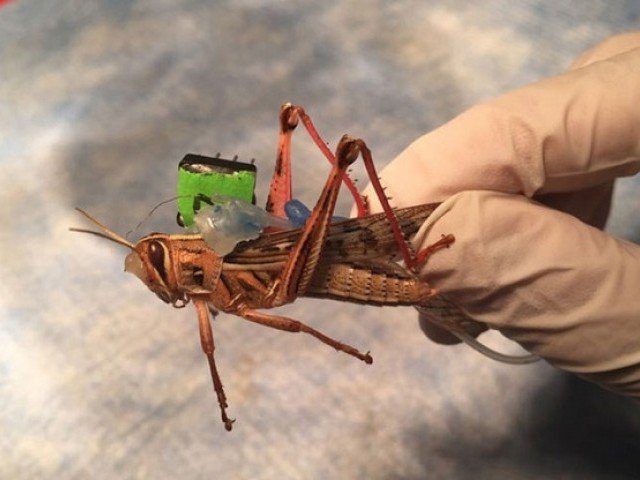
They are entering the country from Afghanistan to damage the crop in Dera Ismail Khan district in Khyber-Pakhtunkhwa from where these locust swarms were entering Punjab thereby posing a serious threat to the country’s food basket.
To many farmers in Sindh, an impending locust attack when summer crops of cotton, sugarcane and rice are being sown, and fruit and vegetables are ready to be picked is a much bigger problem than the coronavirus pandemic.
“If the crops are eaten up by the locusts, we will have a dire food security issue on our hands,” said Zahid Bhurgri, a farmer from Mirpurkhas district.
“The price of flour and vegetables will skyrocket,” making staple foods hard for some to afford, added Bhurgri, who is also general secretary of the Sindh Chamber of Agriculture.
37% area of Pakistan vulnerable to locust attack
The United Nations’ Food and Agriculture Organization (FAO) estimates losses to agriculture from locusts this year could be as high as Rs353 billion for winter crops like wheat and potatoes and about Rs464 billion for summer crops.
A May update from the FAO warned it would be “imperative” to contain and control the desert locust infestation in the midst of the additional impact of the Covid-19 pandemic on health, livelihoods, food security and nutrition for Pakistan’s most poor and vulnerable communities.
Last year, Pakistan suffered its worst attack of locusts since 1993, for which the country was largely unprepared.
Farmers now have little confidence the government will help them fight a new wave of voracious insects threatening their harvests – though officials said extensive measures were being taken.
“Neither the central, nor the provincial government is doing anything about it,” said Bhurgri, who grows vegetables, red chillies, cotton and sugarcane on about 600 acres of land.
Experts say insect populations have found new homes across Pakistan and are now laying eggs in nearly 40% of its territory, including Sindh but mainly in Balochistan.
FAO locust forecaster Keith Cressman said locusts that had unusually stayed in parts of Punjab, Khyber-Pakhtunkhwa and the Indus Valley during the winter would now move southeast to their summer breeding areas in the Cholistan and Tharparkar deserts from May to July.
Swarms breeding in Pakistan’s deserts will likely be joined by others from southern Iran in a few weeks, with more likely to arrive from the Horn of Africa around July, experts predict.
The swarms are expected to be much larger than in 2019, because their numbers increase on average 20-fold with each generation. They travel in swarms of between 30 million to 50 million insects, covering a distance of 150 km (93 miles) and devouring 200 tonnes of crops per day.















1713893627-4/Shredded-10,000-yen-bill-(1)1713893627-4-270x192.webp)

1713889672-1/Plastic-waste-(2)1713889672-1-270x192.webp)






















COMMENTS
Comments are moderated and generally will be posted if they are on-topic and not abusive.
For more information, please see our Comments FAQ